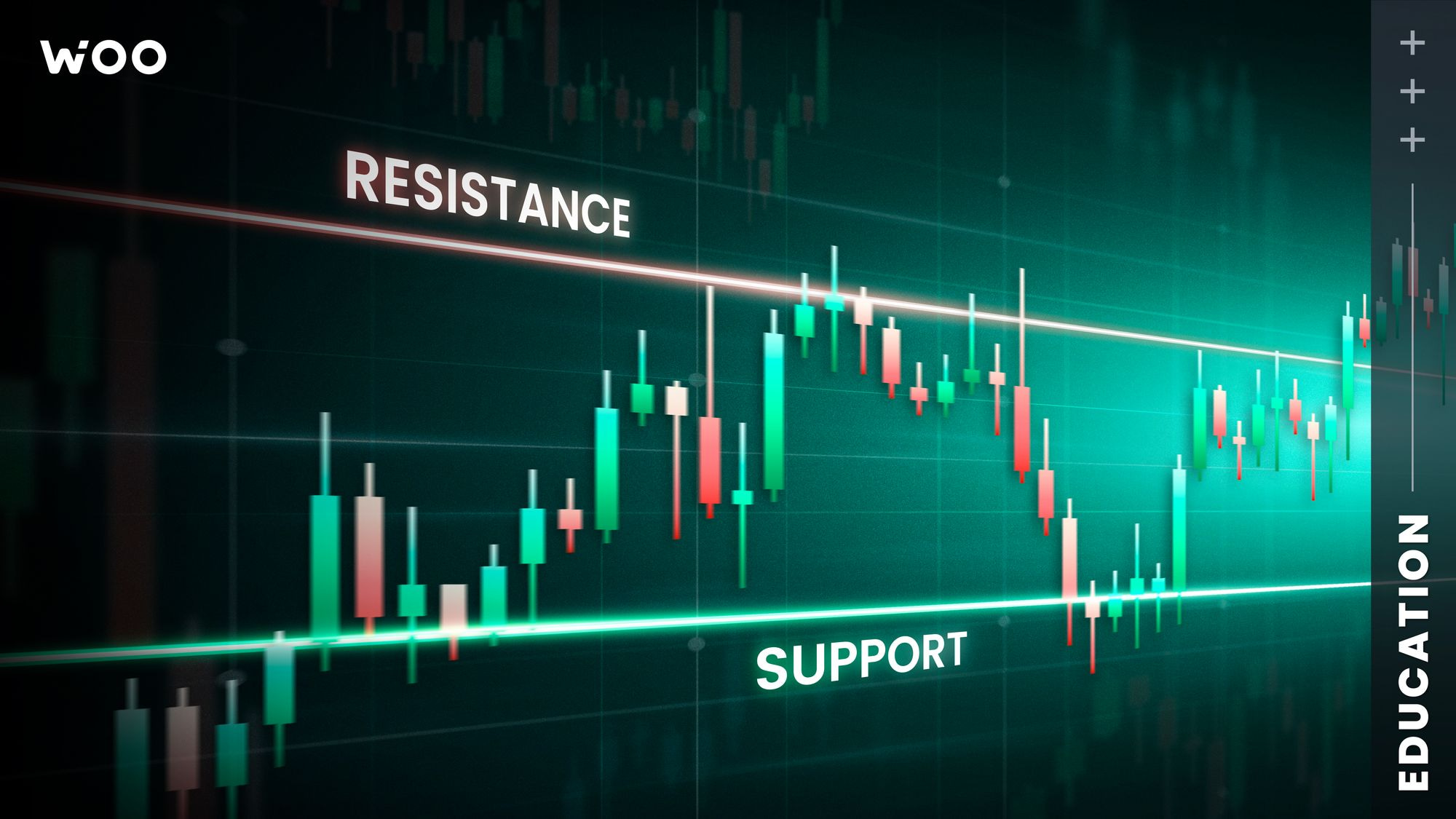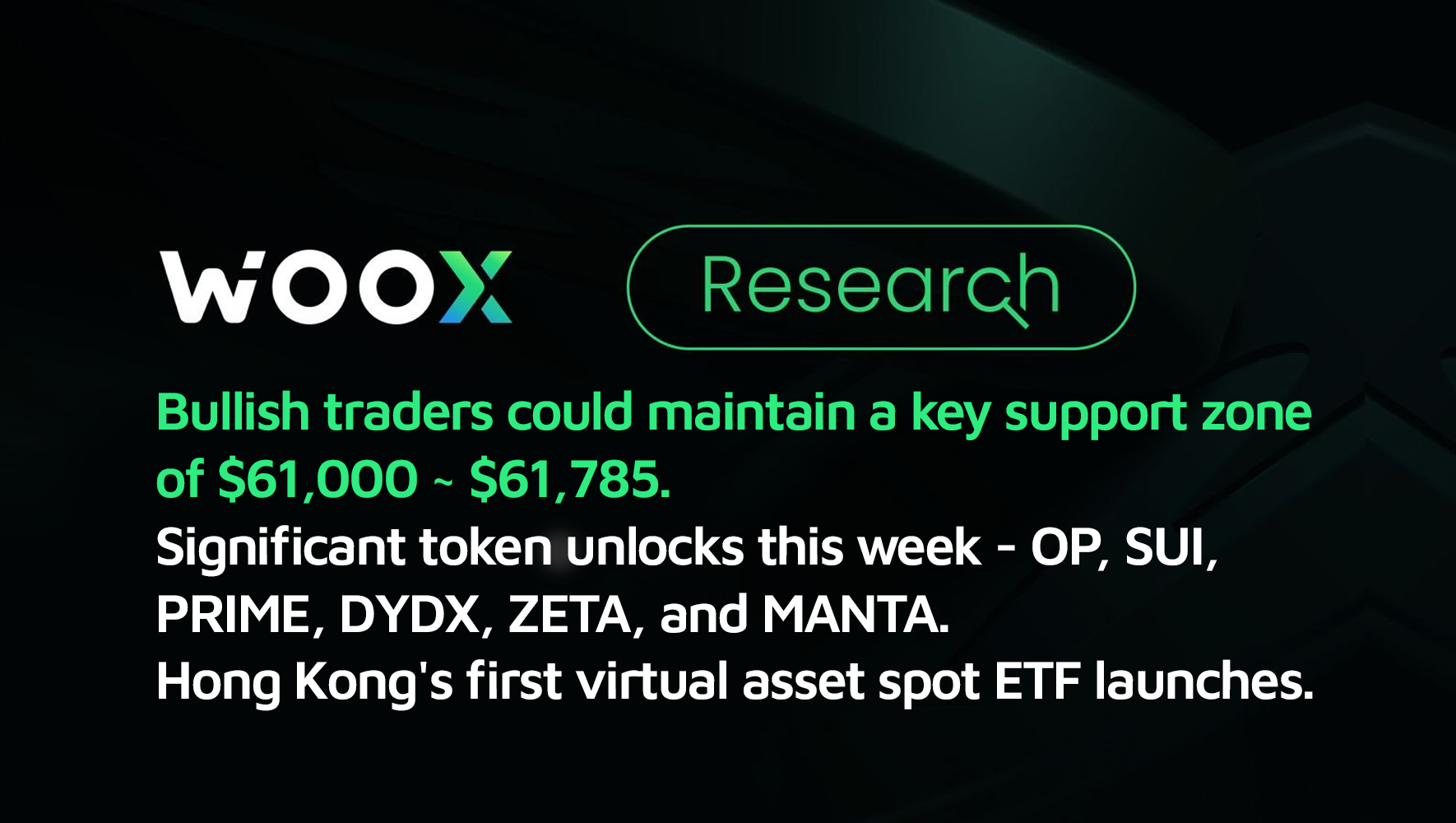article by CryptoJelleNL
In the past months, we have covered a wide range of topics in crypto. We discussed Ichimoku, open interest, trading psychology, and many other topics – but we never once got around to discussing the absolute basics of technical analysis: support and resistance.
It's one of the most fundamental concepts in technical analysis and trading - especially when considering how the concept can universally be applied in any market, be that crypto, stocks, bonds, or forex, so it is high time we discuss it in more detail.
While in theory, support & resistance are simple concepts to understand, the reality is slightly more complex.
What are support & resistance?
In simple terms, support and resistance are areas where price struggles to break through. For instance, when a bullish market struggles to break through a certain price level – we consider this resistance. When a bearish market is continuously held above a certain price level – we consider it support. Generally speaking – support and resistance can be viewed as areas where buyers and sellers want to step in.
I say areas because support or resistance generally goes beyond a single line on the chart – which is why you'll see traders on CT use boxes, or price regions where market participants are likely to do business.
Let's look at an example: the chart below is Bitcoin's weekly chart, with 3 resistance lines drawn on it. All three of them are placed on historically relevant areas (more on this later) – which means that different analysts and traders will keep their eyes on different levels. As such, would it not make more sense to view the entire area as resistance?
Of course, this is an extreme example, as the lowest and highest resistance area are separated by close to $5,000 – but it demonstrates well why support and resistance goes beyond a single level.
The same concept can be applied to support. The below chart shows three support lines drawn on Bitcoin's weekly chart from a few years back – all of them based on historically relevant areas. Again, because different traders will pay attention to different levels of interest, it makes more sense to view the entire region as support.
As such – support and resistance are price regions where buyers or sellers can reasonably be expected to step in. Support is where you anticipate demand (buyers), and resistance is where you expect sellers (supply).
Understanding why this demand or supply shows up is key to finding support and resistance levels of your own:
How to spot support & resistance levels?
Support and resistance levels can be found on all timeframes, be that the 1-minute or the monthly timeframe. However, for most traders, it is best to start on a higher timeframe to find major areas of resistance and support, and then work your way down to lower timeframes to define them further. This is because a higher-timeframe area of interest generally carries more weight than a level that is relevant on the 5-minute chart.
To identify levels of interest, we look back at previous price action to find areas where prices consolidated, or struggled to break through. Take this area on INJ for example – it acts as both support and resistance, depending on whether the price tests the area from above, or below. Judging from how Price struggled to break through this area in the past, we can reasonably assume it will be a relevant area again.
In my personal experience, resistance levels will eventually fade in relevancy. A support level that's been untested for three years will likely not get defended to the same level as a 2-month-old level would be.
As always, technical analysis is not foolproof, and neither are support & resistance levels. In some cases, the market likes to break a level, but then immediately reclaim it. This is called a fakeout, and should have you on high alert, as a strong move generally follows.
In fact, the same INJ chart we studied just before shows one of these fakeouts. As you can see, the price briefly broke above the level we identified but quickly fell back below. A strong sell-off followed. When the price breaks a level, but then quickly retraces to respect the level again – be cautious.
A funny thing about support and resistance is that there is no particular reason why these levels are respected, other than the fact that most people use the same approach to find these levels. Support is support because many people show up to buy there – but they all show up to buy there because they have identified it as support. As such, the concept of support & resistance is (at least in part) a self-fulfilling prophecy.
Using Support & Resistance in Trading
Once we have identified support & resistance levels, the next step is to figure out how to use them to our advantage in trading. Most traders like to use support & resistance as areas where they want to enter or exit trades. They generally do not get into positions just because the price reached support or resistance, but rather because their trading system presented a trigger, while the price was at support or resistance.
For example, let's say price builds a bullish RSI divergence, as well as a falling wedge pattern into resistance. You now have two strong signs suggesting the price wants to move higher, while it sits as support. This gives you reasonable confidence to enter a trade.
It gets even better because support and resistance also give you a clear invalidation. In the previous example, if the price fails to hold the support and drops lower, you know the divergence and falling wedge will probably fail – and you have a strong sign to close your trade at a small loss.
Finally, when the price breaks the support level, you can be reasonably confident that the level will turn into resistance if the price retests it – providing another trading opportunity. When this happens, we speak of a support-resistance flip.
Note: Support and resistance levels generally weaken with every retest, as more of the supply/demand is absorbed.
Closing thoughts
Whether you are a day trader or a long-term investor, understanding support and resistance will go a long way to boost your trading success. It is important to look for confirmation and/or confluence when using support and resistance, to add more confidence to your trade – and use proper risk management techniques to protect your capital in the event that the trade goes south.
Author's Disclaimer: This article is based on my limited knowledge and experience. It has been written for informational purposes only. It should not be construed as trading or investment advice in any shape or form.
Editor's note: CryptoJelleNL provides insights into the cryptocurrency industry. He has been actively participating in financial markets for over 5 years, primarily focusing on long-term investments in both the stock market and crypto. While he watches the returns of those investments roll in, he writes articles for multiple platforms. From now on, he will be contributing his insights for WOO as well.
Check out his twitter: twitter.com/cryptojellenl
—
The content above is neither a recommendation for investment and trading strategies nor does it constitute an investment offer, solicitation, or recommendation of any product or service. The content is for informational sharing purposes only. Anyone who makes or changes the investment decision based on the content shall undertake the result or loss by himself/herself.
The content of this document has been translated into different languages and shared throughout different platforms. In case of any discrepancy or inconsistency between different posts caused by mistranslations, the English version on our official website shall prevail.



